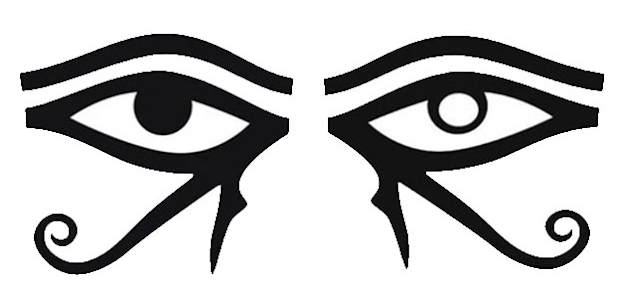➡Crooks➡Crookes
Trump's campaign manager reveals why former president moved his head before gunman's bullet ripped through his earThe reason behind the life-saving move Trump made before gunman shot at him
By KATELYN CARALLE, SENIOR U.S. POLITICAL REPORTER
PUBLISHED: 09:42 EDT, 14 July 2024 | UPDATED: 13:25 EDT, 14 July 2024
Donald Trump's senior campaign adviser says the former president life was saved by his decision to reference charts on the big screen at his Pennsylvania rally on Saturday.
Dan Scavino Jr. said a slight move of Trump's head to the visual aid on the jumbotron was the reason a bullet grazed his ear rather than went through his head.
'Thank God last nights rally was one in which President Trump wanted to use and reference the jumbotron, causing him to slightly move his head at the moment shots were fired,' Scavino said on Sunday.
'He is grateful for all of the prayers, love, and support out there, as he prepares for the GOP Convention in Wisconsin!'
Thomas Matthew Crooks, 20, was shot dead by U.S. Secret Service just seconds after the bullet clipped the former president's ear.https://www.dailymail.co.uk/news/article-13633099/donald-trump-shooting-campaign-manager-reveals-head-bullet.html
A jumbotron,[1] sometimes referred to as jumbovision, is a video display using large-screen television technology (video wall). The original technology was developed in the early 1980s by Mitsubishi Electric[2] and Sony, which coined JumboTron as a brand name in 1985.[3] Mitsubishi Electric sold their version of the technology as Diamond Vision. It is typically used in sports stadiums and concert venues to show close up shots of an event or even other sporting events occurring simultaneously,[4][5] as well as outdoor public places (such as Times Square, for example).[6]
History and development
The jumbotron was invented in Japan during the early 1980s, but there is a dispute between two rival Japanese companies, Mitsubishi Electric and Sony, over its invention.[2] In 1980, Mitsubishi introduced the first large-scale video board,[7] the Diamond Vision, which was a large screen using cathode-ray tube technology similar to traditional tube televisions.[2] The first demonstration of the technology was during the 1980 Major League Baseball All-Star Game in Dodger Stadium, Los Angeles.[7]
Panasonic had the Astro Vision which was based on Fluorescent Discharge Tubes. These were the only three players in the large-screen industry.
Ironically, it was Sony who introduced Daktronics to the pro and college sports world, as Sony would exclusively sell Daktronics scoreboards and controllers with their video board solutions. Eventually, Daktronics replaced Sony in the space completely.
In 1985, the term "JumboTron" was coined by Sony for its large-scale video board.[7] The JumboTron was the brand name for the large-scale video boards originally manufactured by Sony and is recognized as one of the largest non-projection video displays ever manufactured. Sony creative director Yasuo Kuroki, who previously helped create the Walkman, is credited with the development of the JumboTron.[2] It was introduced at the Expo '85 held in May 1985 at Tsukuba, Ibaraki. It had a display resolution of 450,000 pixels, using a new proprietary Sony technology called the Trini-lite.[3] It was a microprocessor-based light bulb developed by one of Kuroki's colleagues, chief Betamax engineer Yuji Watanabe. Trini-lite technology allowed screen clarity and computer control, laying the foundation for the first Sony Jumbotrons.[2]
Cathode rays were discovered by Julius Plücker and Johann Wilhelm Hittorf.[12] Hittorf observed that some unknown rays were emitted from the cathode (negative electrode) which could cast shadows on the glowing wall of the tube, indicating the rays were traveling in straight lines. In 1890, Arthur Schuster demonstrated cathode rays could be deflected by electric fields, and William Crookes showed they could be deflected by magnetic fields. In 1897, J. J. Thomson succeeded in measuring the mass-to-charge ratio of cathode rays, showing that they consisted of negatively charged particles smaller than atoms, the first "subatomic particles", which had already been named electrons by Irish physicist George Johnstone Stoney in 1891. The earliest version of the CRT was known as the "Braun tube", invented by the German physicist Ferdinand Braun in 1897.[13] It was a cold-cathode diode, a modification of the Crookes tube with a phosphor-coated screen. Braun was the first to conceive the use of a CRT as a display device.[14] The Braun tube became the foundation of 20th century TV.[15]
レスリー・ウォード(Sir Leslie Matthew Ward、1851年11月21日 - 1922年5月15日)はイギリスの挿絵画家(漫画家)である。イギリスの娯楽雑誌『バニティ・フェア』に多くの有名人のカリカチュアを描いたことで知られる。しばしば"Spy" や "Drawl"の名前で、作品を発表した。
ロンドンに生まれた。父親のエドワード・マシュー・ウォードは歴史画を描いた画家で、母親のヘンリエッタ・ウォードもジェームズ・ウォードから続く画家の家系で、自らも歴史画や風俗画を描いた。母方の縁戚には肖像画家のジョン・ジャクソンや動物画も描いたジョージ・モーランドもいて、多くの芸術家達の中で育った[1]。
イートン校で学んでいたころから、友人や教師の似顔絵を描き始め、1867年に16歳で兄の胸像をロイヤル・アカデミー・オブ・アーツに出展した。父親は建築家になることを望み父親の友人の建築家の事務所で不本意な時間を過ごした後、父から許しを得て1871年にロイヤル・アカデミー・オブ・アーツの学校で絵の勉強を始めた。娯楽雑誌の『バニティ・フェア』は1868年に創刊されていて、1873年にウォードは雑誌の創刊者のボウルズ(Thomas Gibson Bowles)に作品を送り、ボウルズと不仲になったカルロ・ペリグリーニ(筆名:”Ape")にかわって『バニティ・フェア』に雇われ、筆名は"Spy"としてカリカチュアを描く仕事を始めた。
1873年から1911年の約40年間、『バニティ・フェア』で働き、1,325点の似顔絵を描いた。1868年から1914年まで刊行された『バニティ・フェア』に掲載されたカリカチュア、2,387点の半分以上はウォードが描いたことになった。1915年に自伝、"Forty Years of "Spy" "を出版した[2]。
LoLLoLLoLLoLLoLLoLLoL



トロん好き
返信削除ニッポン人
仁科博士w
Crookesからの
返信削除X線
LoL
まさにプロトコルX
LoL
お友達の
返信削除Cromwell Fleetwood Varley
のwikiより
Spiritualism
He was sympathetic to the claims of Spiritualism and carried out investigations with fellow physicist William Crookes using a galvanometer to make measurements of the supposed phenomena
LoL
CrookesをClowかブらンどんを思い浮かべてしまったよ
返信削除